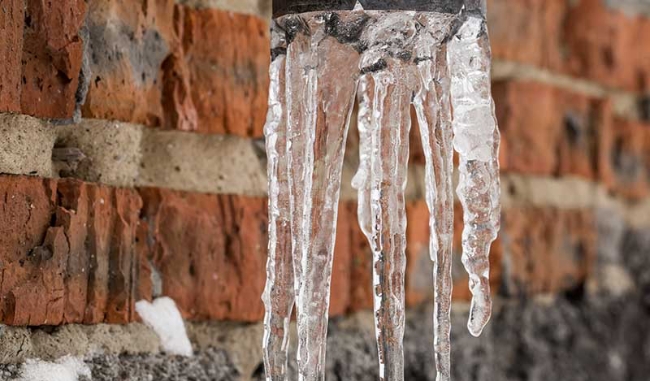Avoiding Frozen Plumbing in Winter: Pro Tips
Avoiding Frozen Plumbing in Winter: Pro Tips
Blog Article
What are your ideas regarding How To Avoid Freezing Pipes?

Cold weather can damage your plumbing, specifically by freezing pipelines. Here's exactly how to prevent it from occurring and what to do if it does.
Intro
As temperatures drop, the risk of frozen pipelines rises, possibly resulting in pricey repair work and water damages. Comprehending just how to avoid icy pipelines is vital for property owners in chilly climates.
Comprehending Frozen Pipes
What causes pipes to freeze?
Pipes freeze when subjected to temperatures below 32 ° F (0 ° C) for extended periods. As water inside the pipelines ices up, it broadens, taxing the pipeline wall surfaces and potentially creating them to rupture.
Risks and problems
Frozen pipes can result in water supply disturbances, residential property damage, and pricey repair work. Ruptured pipelines can flood homes and create considerable structural damages.
Indications of Frozen Piping
Determining frozen pipelines early can prevent them from breaking.
How to determine frozen pipes
Search for lowered water circulation from faucets, unusual odors or noises from pipelines, and noticeable frost on exposed pipes.
Avoidance Tips
Shielding prone pipes
Cover pipes in insulation sleeves or use heat tape to shield them from freezing temperature levels. Focus on pipelines in unheated or outside locations of the home.
Heating techniques
Keep indoor rooms properly warmed, especially locations with plumbing. Open up cabinet doors to allow warm air to flow around pipes under sinks.
Shielding Outdoor Pipes
Garden tubes and exterior faucets
Separate and drain pipes garden hose pipes before winter season. Install frost-proof faucets or cover outside faucets with shielded caps.
What to Do If Your Pipelines Freeze
Immediate actions to take
If you believe frozen pipes, maintain faucets open to soothe pressure as the ice thaws. Utilize a hairdryer or towels taken in hot water to thaw pipelines slowly.
Long-Term Solutions
Architectural adjustments
Think about rerouting pipelines away from outside wall surfaces or unheated areas. Add extra insulation to attics, cellars, and crawl spaces.
Upgrading insulation
Purchase top notch insulation for pipelines, attic rooms, and walls. Proper insulation helps maintain regular temperature levels and minimizes the danger of frozen pipelines.
Verdict
Stopping frozen pipes calls for positive steps and quick feedbacks. By comprehending the causes, indicators, and preventive measures, homeowners can secure their pipes throughout cold weather.
6 Proven Ways to Prevent Frozen Pipes and Protect Your Home
Disconnect and Drain Garden Hoses
Before winter arrives, start by disconnecting your garden hoses and draining any remaining water. Close the shut-off valves that supply outdoor hose bibs and leave the outdoor faucet open to allow any residual water to drain. For extra protection, consider using faucet covers throughout the colder months. It’s also important to drain water from any sprinkler supply lines following the manufacturer’s directions.
Insulate Exposed Pipes
Insulating your pipes is an effective way to prevent freezing. Pipe insulation is readily available at home improvement stores and is relatively inexpensive. Pay close attention to pipes in unheated areas such as the attic, basement, crawl spaces, or garage. Apply foam insulation generously to create a buffer against the cold. You can also wrap your pipes in heat tape or thermostat-controlled heat cables for added warmth.
Seal Air Leaks
Inspect your home for any cracks or openings that could let in cold air. Seal any holes around the piping in interior or exterior walls, as well as the sill plates where your home rests on its foundation. Additionally, make sure to keep your garage door closed unless you’re entering or exiting. Leaving it open creates a significant air leak that can lead to frozen pipes.
Allow Warm Air Circulation
During cold snaps, it’s essential to allow warm air to circulate evenly throughout your home. Leave interior doors ajar to promote better airflow. Open kitchen and bathroom cabinets to help distribute heat consistently around the rooms. If you have small children or pets, be sure to remove any household chemicals or potentially harmful cleaners from open cabinets for safety.
Let Faucets Drip
A small trickle of water can make a big difference in preventing ice formation inside your pipes. When temperatures drop significantly, start a drip of water from all faucets served by exposed pipes. This continuous flow helps prevent the water from freezing. Additionally, running a few faucets slightly can relieve pressure inside the pipes, reducing the chances of a rupture if the water inside does freeze.
https://choateshvac.com/6-proven-ways-to-prevent-frozen-pipes-and-protect-your-home/

I hope you liked our part on 6 Ways to Prevent Frozen Pipes. Thank you so much for taking time to read our piece. For those who enjoyed reading our post plz don't forget to pass it around. I truly appreciate your readership.
Request Estimate Report this page